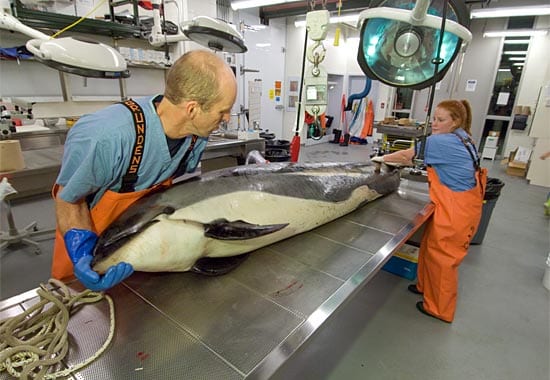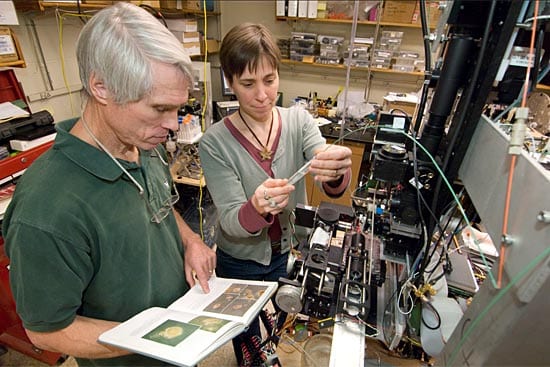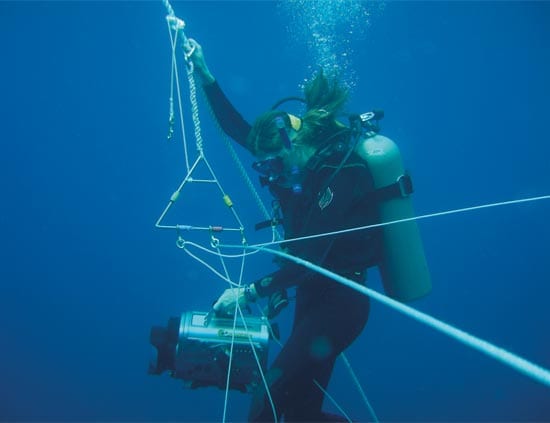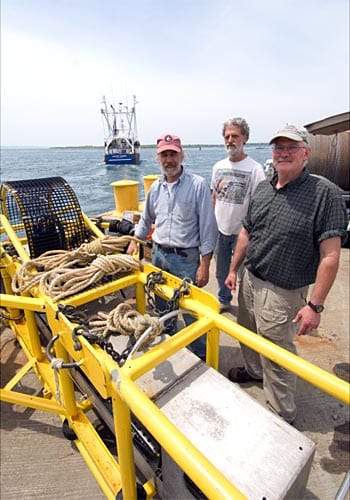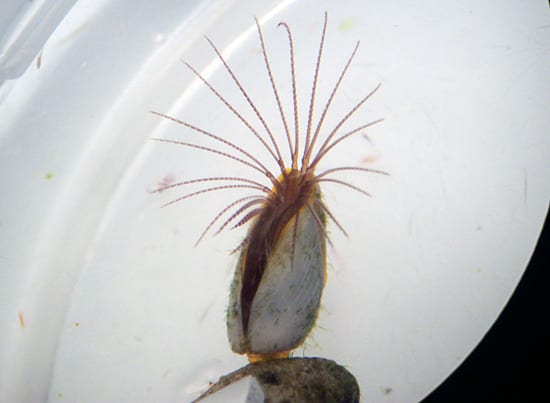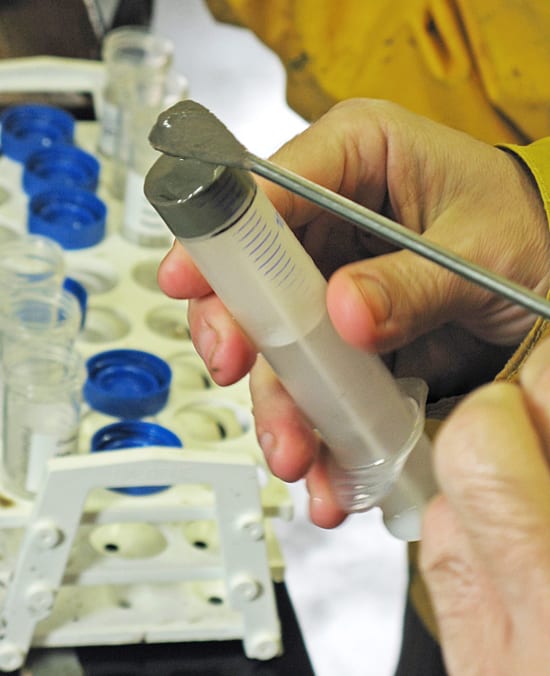- WHOI biologist Michael Moore and guest student Colby Moore (College of the Atlantic) carefully position a white-sided dolphin for a necropsy. The dolphin was one of dozens of animals that were examined in WHOI’s necropsy facility in 2007. (Photo by Tom Kleindinst, Woods Hole Oceanographic Institution)
- WHOI biologists Rob Olson and Heidi Sosik examine plankton-filled water samples on a prototype of the Imaging FlowCytobot (IFCB) in Olson’s laboratory. The Cytobot, which is automated and submersible, counts and photographs microscopic plants in the water. The images and data are relayed by cable to a shore-based laboratory, where specially developed software classifies the plankton into taxonomic groups. (Photo by Tom Kleindinst)
- MIT/WHOI Joint Program student Kelly Rakow untangles tethers attached to her fellow divers during a “blue water” dive off the Pacific coast of Panama. The tether system is used to ensure that divers don’t become disoriented or drift away when exploring the featureless—and seemingly bottomless—environment. Rakow is using blue water diving and an underwater video camera to study barrel shaped, gelatinous organisms called salps at the Liquid Jungle Lab. (Photo by Andrew Gray, University of California, Santa Cruz)
- From left: Norman Vine (Advanced Habitat Imaging Consortium), Richard Taylor (a local fisherman), and WHOI biologist Scott Gallager assemble on the Iselin pier after testing the habitat camera mapping system, or HabCam, on Georges Bank. Gallager and colleagues are using HabCam to help assess populations of shellfish, finfish, and other marine populations through the Northeastern Bentho-Pelagic Observatory project. (Photo by Tom Kleindinst, Woods Hole Oceanographic Institution)
- While towing a phytoplankton net near the Vanuatu Islands for samples of the colonizing bacteria Trichodesmium, researchers caught a straggler—a barnacle attached to a floating piece of pumice. Though the barnacle did not have much value to the research on the Western Pacific Warm Pool 2007 cruise, it did provide plenty of entertaining viewing under the dissecting microscope. (Photo by Annette Hynes, Woods Hole Oceanographic Institution)
- Postdoctoral fellow Luciano Fernandes of the WHOI Biology Department handles a mud sample plucked from the Gulf of Maine during an October 2007 cruise on the research vessel Oceanus. As part of the five-year Gulf of Maine toxicity experiment (GOMTOX), researchers from WHOI and several other institutions are observing and modeling the patterns and mechanisms that lead to blooms of Alexandrium fundyense, a harmful form of algae that can sicken humans who eat tainted shellfish. The sediment samples allow researchers to assess how many seeds, or cysts, are residing in the mud for potential blooms in the following year. (Photo by Alexander Dorsk, Woods Hole Oceanographic Institution)
Image and Visual Licensing
WHOI copyright digital assets (stills and video) contained on this website can be licensed for non-commercial use upon request and approval. Please contact WHOI Digital Assets at images@whoi.edu or (508) 289-2647.
